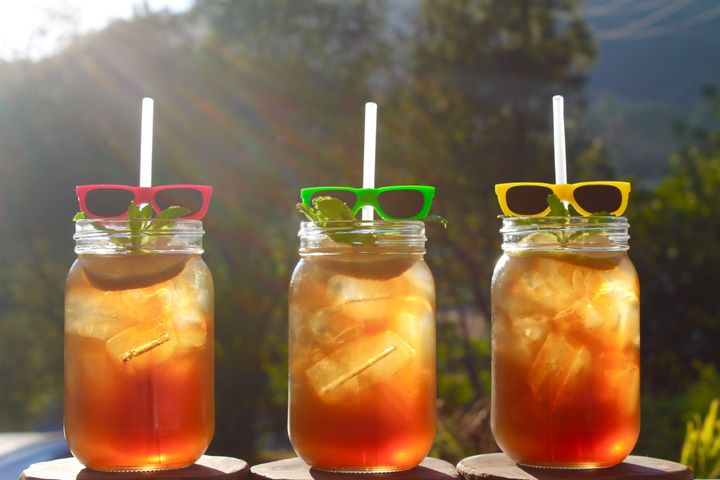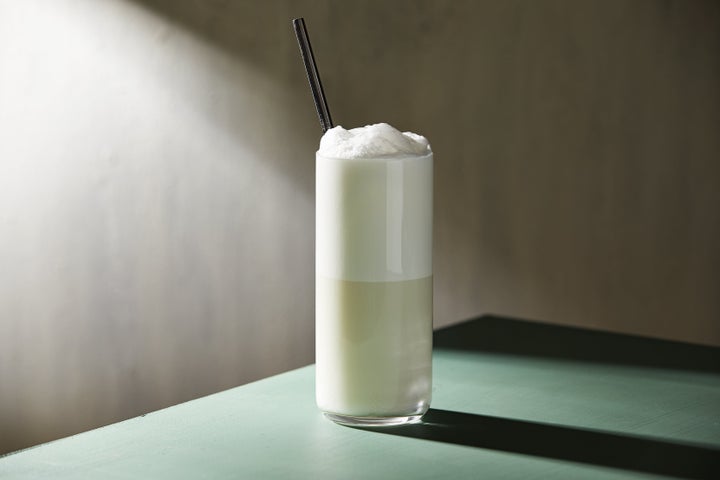
Maybe you know the feeling of being self-conscious when ordering at a bar, a little worried that the bartender is going to silently judge you if you make the wrong choice. Are espresso martinis passé now? Is vodka and diet Coke a thing?
Chances are, your bartender isn’t thinking much at all about your order, except for how to make it — but there are definitely drinks that the pros themselves would never order while out on the town. Some drinks are unlikely to come out well unless it’s something the bar specialises in, and some are just plain annoying to make. No one wants to be the guy who orders a complicated, multi-step drink when the bar is packed and a sea of people are clamouring for their well drinks.
The key, said Daniel Yeom, general manager of Esters Wine Shop & Bar in Santa Monica, CA, is to “read the room.” A great order at a fancy cocktail lounge can be a terrible choice at a dive bar, and vice versa. And if the bar is busy, try not to monopolise your bartender’s time with something that takes several minutes to prepare.
In any case, bartenders know not just what a wide variety of drinks and ingredients taste like, but what goes into each pour. We spoke to several bar professionals about the kind of drinks they’d personally never order while off the clock.
Think twice before getting wine or draft beer at a dive bar.
Yeom says he will “never order a glass of wine, or anything other than a gin and tonic, whiskey and Coke, or a beer in a bottle at a dive bar.” If you’re selective when it comes to wine, you’ll probably want to take his lead.
“I don’t know how long that wine’s been open, and the chances of whatever bottle has been sitting behind the bar making me happy is pretty close to zero,” Yeom said. The flavours of wine start to degrade more or less immediately after opening and can go bad in a matter of days, so unless an establishment is meticulous about its wine preservation practices, that $9 glass of red could easily be flat and overly acidic.
As for why Yeom won’t order draft beer at a dive bar, beer drinkers may want to take a deep breath before reading on. You can’t know, he says, “the last time the draft system got cleaned; it can be really nasty in there with fruit flies and gunk.” Unless you really trust the sanitation practices at your dive of choice, you might just want to stick with something that came in a bottle.
Don’t even dream about ordering a Long Island iced tea.
“No bartenders ever order a Long Island iced tea,” asserts Lauren Lenihan, director of operations for Paris Café and Common Ground Bar in New York City, and a bartender with over 20 years of experience.
Easily one of the most reviled cocktails out there, a Long Island (which doesn’t actually include any iced tea) is widely considered a poor choice for both your sake and your bartender’s. For one thing, the drink contains a puzzling number of ingredients. The official recipe, according to the International Bartenders Association, calls for gin, vodka, white rum, tequila, and triple sec, with non-booze flavor provided by lemon juice, simple syrup, and a splash of cola.
“I personally don’t mind making them, but there are a TON of bartenders that refuse to make them, let alone drink them,” Lenihan said.
The other reason some bartenders might dislike Long Island iced teas is because they’re typically a drink for those who don’t really care what their drink tastes like. In fact, the whole point of a Long Island is that when you blend enough strongly-flavoured ingredients, you can’t really identify them by taste.
“It’s definitely a ‘green,’ juvenile drink of choice,” Lenihan told HuffPost. “Most customers just want it because it’s strong and they’re looking to get drunk quickly.”
It’s an efficient but not necessarily tasteful cocktail, and may give your bartender the impression that you don’t really care what you drink and just want to get wasted. Which, if that’s the case, why not just order shots and save your bartender some time?

Avoid ordering a Ramos Gin Fizz if the bar isn’t elite.
A Long Island commits the dual sin of being both annoying to make and not tasting very good, but there are still some well-regarded cocktails that your bartender would probably rather you didn’t order — which means they usually won’t order it themselves. A Ramos Gin Fizz, for instance, can be deliciously frothy, light, and silky smooth, blending gin with citrus, cream and egg whites. A well-made Ramos is a real treat, but it basically requires a whole chemistry experiment to bring its many ingredients together.
“It’s a labor-intensive cocktail that needs a lot of shaking so the cream and egg ingredients can emulsify and basically turn into a meringue,” explained Mauro Villalobos, the beverage director at Superfrico in Las Vegas.
Julien Calella, the Los Angeles-based VP of beverage at Wish You Were Here, a hospitality group that oversees restaurants in New York, LA, and Los Vegas, seconded the Ramos Gin Fizz as a drink to avoid.
“I would never order a Ramos Gin Fizz at a busy venue, even if they are known for high quality cocktails,” Calella told HuffPost. The process, he said, requires the bartender to “dry shake all of the ingredients for at least five minutes, and then shake with ice, and lastly let the drink settle in the glass before pouring about an ounce of soda over the top very delicately so the froth in the drink raises about an inch above the glass without sagging.” Woof.
“Needless to say, it is a huge pain for a busy bartender, and I will only have one at a bar if it is a high quality cocktail bar, with hardly anyone else in the building, and the bartender offers,” Calella said. Tasty though it may be, it’s not an order that will make you very popular with bar staff.
“If you have proper bar etiquette in a busy bar, don’t order this,” Villalobos said, “or, order it if you hate the bartender.”
Avoid ordering Guinness on a busy night.
You might assume that any draft beer is a simple, reliable thing to order when the bar is crowded — and that’s true, for the most part. But Jack Tynan, a bartender who works at Interboro Spirits & Ales, a brewery and distillery in Brooklyn’s East Williamsburg neighbourhood, flagged an exception: a pint of classic Guinness.
“I wouldn’t get a Guinness at a busy dive bar, because it takes about a week to 10 days to pour the dang thing,” Tynan said. “I’ll sit in a nice quiet pub and get a Guinness because they’ll take the time and do it right,” but because draught Guinness comes on nitrogen rather than standard carbon dioxide taps, it takes a lot longer to pour if done correctly. It needs to be poured in two steps, with time for the beer to settle in between, in order to get the right head-to-liquid ratio. If your bartender already has a lot to juggle, ordering a Guinness means risking a less-than-perfect pour, or at the very least, making your order more complicated than if you had ordered basically any other beer.
Avoid espresso martinis at a bar that doesn’t have solid coffee.
The resurgence of the espresso martini has been one of the splashiest cocktail trends of the last few years, and while it’s delicious, you might want to think twice before ordering one. Because of the coffee element, the quality of an espresso martini can vary dramatically from one bar to another.
“Most bars are not equipped with a decent espresso machine and the coffee might be old and sitting for a long time behind the bar,” said Alejandro Echeverria, bartender and beverage director for the Sushi by Bou family of speakeasies.
The classic recipe calls for a freshly pulled espresso shot, which is combined with vodka, Kahlua, and simple syrup, then shaken over ice to cool it down – ideally, without diluting it too much. For the sake of simplicity and quality control, lots of bars have their own variations on the espresso martini that swap cold brew or chilled drip coffee for the actual espresso. Some of these are downright delightful, but unless you know exactly what you’re ordering, you may want to pick something else.
“Most of the time it comes out unbalanced and flat or bitter,” Echeverria said. “It’s a really tricky cocktail to pull off. From the quality of ingredients to the consistency of the shake, every factor can affect the end result.”
Avoid margaritas at places that don’t specialize in them.
Some drinks are so universal, you might expect to be able to get a decent one anywhere — but in reality, there are so many possible variations on standard recipes that it’s hard to guarantee a drink will taste the same from one bar to the next. For Karla B., who bartends at Neshobe Golf Course in Brandon, VT, the humble margarita is too risky a gamble.
“I have traveled far and wide and I can never find the perfect one,” she said. While the standard margarita recipe is, seemingly, too simple to mess up — just tequila, lime juice, and triple sec, shaken with ice and garnished with a salt rim — it’s incredibly common for different establishments to make alterations based on what’s available and what their bartenders are comfortable working with (swapping lime juice for sour mix, for example). Factor in personal preferences, and you’re unlikely to find two places that make a margarita exactly the same way.
Often, Karla says, “the sour mix is wrong; I like sugar over salt. Some people put peach schnapps in it, or sometimes they’ll use triple sec. You really never know what you’re going to get.”
Of course, there’s only one way to find out if any given bar makes a margarita that’s to your liking – just be prepared to slog through some misses before you find a hit.